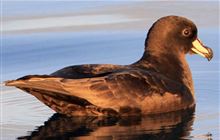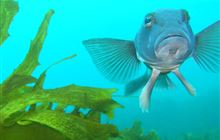Tāiko/black petrel education resource
Introduction
This resource is an integrated unit of teaching and learning material about the tāiko/black petrel and other seabirds, for use in primary schools.Published: 2015
Students are introduced to the tāiko/black petrel and then extend their learning inquiry to investigate and research gannets/tākapu, little blue penguins/kororā and red-billed gulls/tarāpunga.
The resource has been developed for year 5-8 primary teachers, with a New Zealand context.
It incorporates aspects of Te Ao Māori and addresses science, social science, English, mathematics and environmental education/ education for sustainability objectives from across the NZ Curriculum.
Download the resource
Download the tāiko/black petrel education resource and supporting material:
- Tāiko/black petrel education resource (PDF, 7,651K)
- Tāiko/black petrel powerpoint presentation (PPTX, 15,366K)
- Tāiko/black petrel factsheet (PDF, 185K)
Learning objectives
Vision
This resource will build foundations for:
- young people who are informed about seabirds and the issues they face
- students and communities who are able to think creatively and connect with others to be actively involved in caring for seabirds.
Key concepts
- The ecology of the black petrel and other seabirds
- Life cycle, habitat and breeding information
- Red-billed gulls, little blue penguins, gannets
- How people affect seabirds
- Threats to seabirds
- Protection of seabirds
- Future -focussed thinking
- How to help seabirds in their community
Learning levels
- Primary
- Secondary
Topics
- Native animals
- Marine and coastal
Curriculum links
The following values, key competencies and principles are incorporated into the resource:
Values: Ecological sustainability; Respect; Inquiry and curiosity; Innovation; Diversity; Community and participation
Key competencies: Thinking; Using language, symbols and text; Managing self; Relating to others; Participating and contributing
Principles: Learning to learn, Cultural diversity, Community engagement, Future focus
Curriculum learning areas
Achievement objectives from relevant subject areas are listed in the teacher notes of each activity. Specific
learning intentions and success criteria deriving from the AO's are listed in each learning experience.
The following subject areas and strands are included in the resource:
Science
Nature of Science: Understanding about science, Investigating in science, Communicating in science, Participating and contributing
Living world: Life processes, Ecology
Social Sciences
Social studies
English
Processes and strategies: Listening, Reading and Viewing and Speaking, Writing and Presenting
Ideas
Technology
Technological Practice: Brief development
Minor links to:
Mathematics, Health, The Arts, Education for sustainability/ Environmental education



